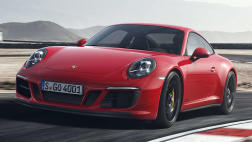The Volkswagen Beetle is one of the most significant cars of all time. Conceived by Adolf Hitler in the mid 1930s as an affordable car for the people ('Volks' is German for people, 'wagen' means car) it later became a best seller worldwide.
In Australia it was hugely popular in the 1960s, often being outsold only by Holden and Falcon, providing cheap, reliable transport for many people. Volkswagens were made in Melbourne for many years, though some variants were imported from Germany.
Today there are still many Beetles (a name, incidentally, never officially used by the company) on Australian roads. However, the conversion of many into street cruisers, convertibles, Porsche lookalikes and beach buggies has thinned their ranks considerably.
Standard cars are still not rare enough to be regarded as a good investment, but that time can't be too many years away.
Crude by today’s standards, the Beetle is slow, noisy, cramped and not particularly safe (though later models improved somewhat in that latter vital area).
On the upside, the German car is understressed, long lasting and has the sort of character that just doesn't exist in modern-day, computer-designed small cars.
Though the first Beetles came here in 1954, you are better looking at models from 1957 onwards. Not only are these more readily available, they have more power and are easier to drive and park due to their larger rear window.

Having said that, the old models with the tiny back windows, and in particular those with the split back window, are more likely to go up significantly in value than later ones.
Other significant improvements were made in 1963, 1967, 1971 and 1973, with the early, somewhat primitive handling being replaced by a better system in the 1967 model.
Despite having a strong similarity in appearance, the cars were changed surprisingly often. Later models have nothing of any significance which is interchangeable with older ones. The biggest body changes took place in the 1967 and 1971 year models.
All are two-door sedans, with the exception of a few two-door convertibles. Having the engine in the rear significantly restricts luggage space. The boot in the front is tiny by today’s standards, but there is more storage space behind the rear seat. It is reached by way of the front doors so isn't exactly easy to use. The rear-seat backrest can be folded down to get at it or to increase carrying capacity.
VW Beetle engine sizes began at 1.1 litres, went up to 1.2 litres in 1953, 1.3 in 1966 and 1.5 in 1968. The 1.3 made a comeback as a low cost option in 1970, selling alongside the 1.5. Finally a 1.6-litre engine replaced the 1.5 in 1971 in the Super Bug.
Transmissions are almost all four-speed manuals, though there were some three-speed semi-automatics (the badge isn't quite truthful and says ‘VW Automatic’). The semi-auto requires you to shift gears manually, but the clutch is controlled by the car.
What to look for
These cars are getting old and many have been extensively modified, sometimes with a lot of skill and attention to detail, at other times by people who really don't know what they are doing. So check them over carefully - then call on the services of a VW expert or an inspector from your motoring association.
Look for rust in the lower edges of the doors, the door pillars beneath the lower hinges, the bottom corners of the mudguards and the cabin floor.
Check the condition of the battery carrier beneath the right-rear seat. It is not unknown for the battery to arc and set fire to the underside of the seat.
Engines are noisy even when running well. If it seems too bad, or there are oily fumes from the exhaust pipe, get a quote for repairs. Unless you want to keep the car original, a worn engine is often a good reason to have it uprated in size and power. This is a comparatively simple job, but don't attempt it yourself unless you have some expertise in the field.
Gearboxes are normally light and easy in operation. If one sticks or crunches, especially when changing down through the gears, it is due for overhaul or replacement.
Look at the tread of the rear tyres for signs of uneven wear from side to side. It is not unusual for owners to change the angles of the rear wheels in an attempt to lower the car and improve road grip. This plays havoc with the tyre life.
How much
Prices will vary enormously, these listed here are for cars in reasonable, not restored, condition. They don't take into account major modifications.
A 1960 VW 1200 will now cost about $2000 to $3000; a 1965 VW 1200 $2000 to $4000; a 1970 VW 1500 $3000 to $5000; a 1973 VW Super Bug S $4000 to $6000; a 1976 Super Bug L $5000 to $7000.
Car buying tip
If you are looking for long term investment opportunities in an old car buy one which is completely standard. If it has been modified, but the original parts have been stored away, make sure they are included in the deal
Volkswagen Beetle 1968: 1300 Custom
| Engine Type | Inline 4, 1.3L |
|---|---|
| Fuel Type | Leaded Petrol |
| Fuel Efficiency | 0.0L/100km (combined) |
| Seating | 0 |
Range and Specs
| Vehicle | Specs | Price* |
|---|---|---|
| 1600 | 1.6L, Leaded Petrol, 4 SPEED MANUAL | $4,180 - $5,940 |
| 1600 Super Bug L | 1.6L, Leaded Petrol, 4 SPEED MANUAL | $3,300 - $4,730 |








.jpg)



.jpg)
.jpg)